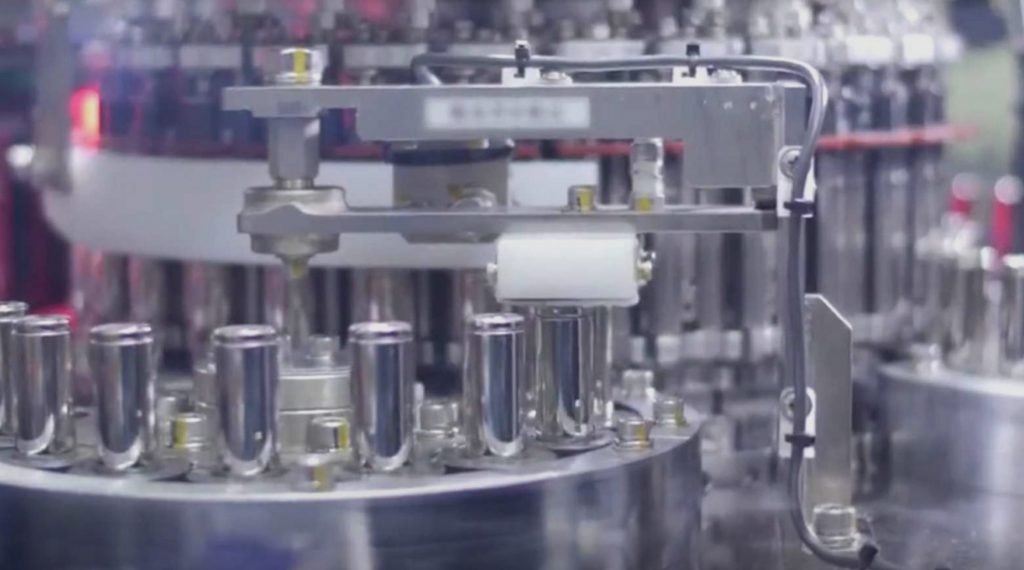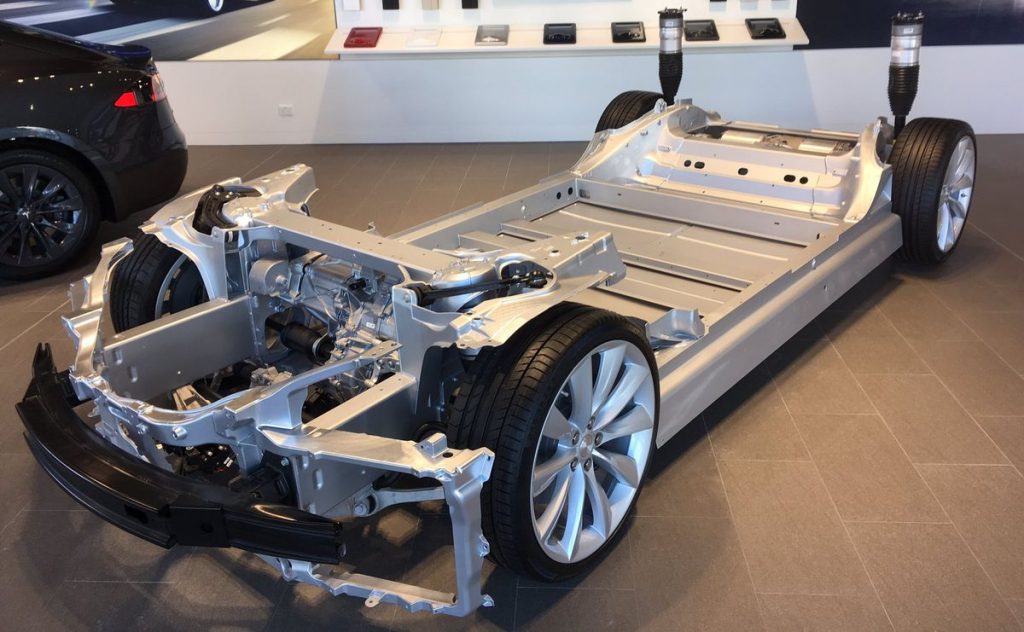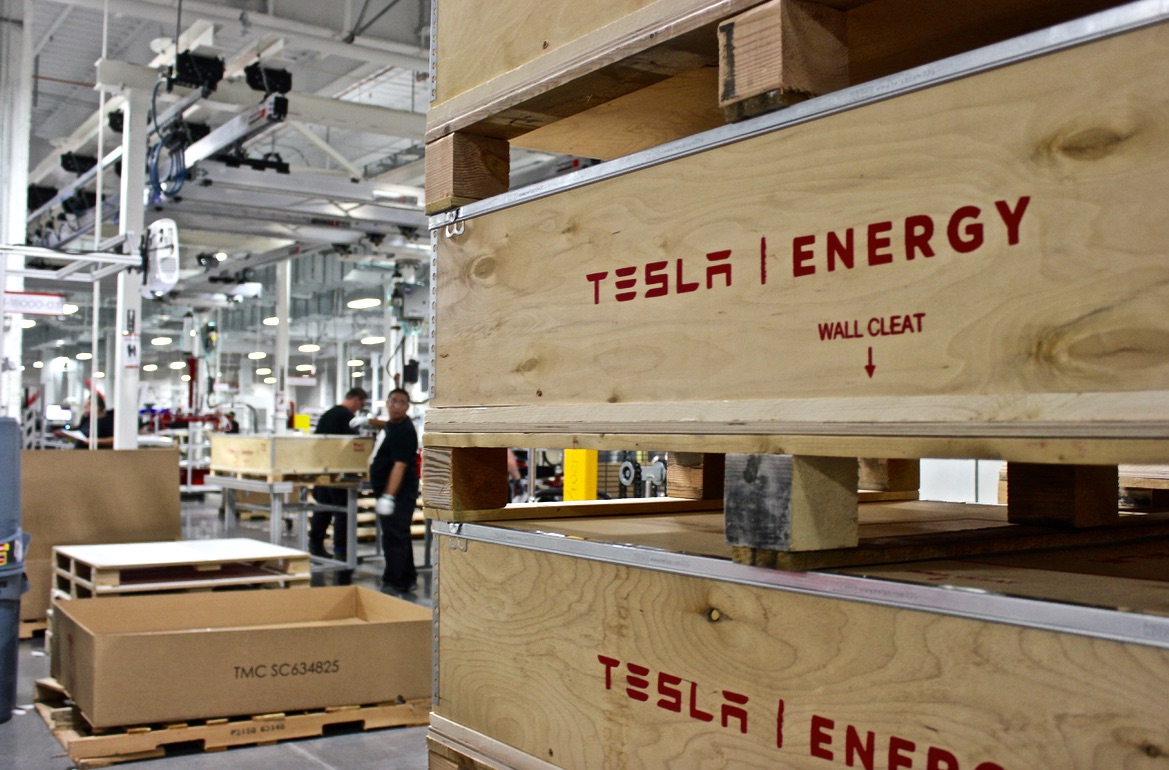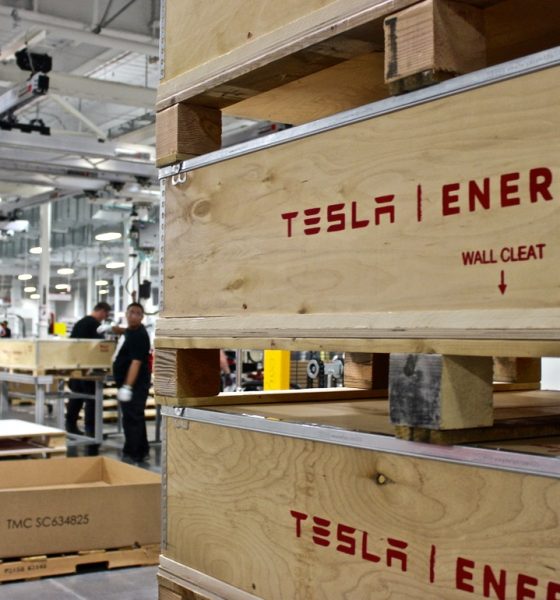Tesla’s potential as a future battery supplier for other automakers is being paved by the ongoing struggles of the company’s rivals today. This idea is becoming more and more feasible as more and more veteran automakers experience battery-related challenges in their respective electric car programs.
Building electric cars is no easy task. As evidenced by the issues plaguing the rollout of the mass-market Volkswagen ID.3, making good electric vehicles is not just a matter of stuffing an electric motor and batteries in an existing platform for an internal combustion car. Making EVs, especially good, high-performing ones like the Tesla Model 3, requires mastery of a different set of skills, such as software management and battery optimizations.
The latter is where a vast divide exists between Tesla and legacy automakers today. Tesla utilizes its own proprietary battery tech for its vehicles. The 2170 cells for its Model 3 sedan are even being produced at Giga Nevada, a massive factory that is poised to become one of the largest in the world by footprint once it’s completed. Veteran automakers, on the other hand, rely on suppliers such as LG Chem to supply their EVs’ batteries.

LG Chem supplies cells to several automakers, including Audi and Jaguar, whose e-tron and I-PACE both utilize the company’s batteries. Rivian, which uses 2170 cells for the R1T pickup and the R1S SUV, source their cells from the South Korean firm as well. More recently, even startup Lucid Motors, which is reportedly on the cusp of releasing its first vehicle, the Air, also announced that it would be sourcing cells from LG Chem. This is great for LG Chem, as it validates the quality and capabilities of its batteries, but it also does not bode well for all the companies looking to acquire adequate battery supply for their electric cars.
As it is, LG Chem appears to be having difficulties meeting the demand for its vehicles already. Shortages of cells from the battery manufacturer have reportedly become the cause for the recent halts in the Audi e-tron and the Jaguar I-PACE’s production. And this is just with premium-priced, mid-volume SUVs. When high-volume vehicles enter the market, such as the Volkswagen ID.3 (which also gets some of its cells from LG Chem), the South Korean firm will likely find it even more challenging to supply batteries to all its clients.
This supply issue could become a serious challenge to the electric car revolution. With this in mind, and with even more electric cars coming in the next few years, a need for another battery supplier emerges. This is where Tesla comes in. Tesla has been expanding its business to not just focus on building electric cars, as evidenced by the company’s energy and battery storage initiatives. Considering Tesla’s experience in building EVs, as well as the industry-leading quality of its batteries, the company may very well be poised to become one of the leading suppliers of cells for other electric car makers.

Interestingly enough, CEO Elon Musk has mentioned the possibility of Tesla serving as a supplier of batteries and powertrains to other automakers in the past. This was explained by Musk himself during the Q3 2019 earnings call. “It would be consistent with the mission of Tesla to help other car companies with electric vehicles on the battery and powertrain front, possibly on other fronts. So it’s something we’re open to. We’re definitely open to supplying batteries and powertrains and perhaps other things to other car companies,” he said.
Fiat-Chrysler CEO Steve Manley also suggested the idea during a Q&A session. Speaking about the company’s electric vehicle strategy, Manley mentioned that Fiat-Chrysler would likely be purchasing key electric car components from the Silicon Valley-based company. “It would be wrong of me to say no,” Manley said, adding that batteries and drivetrains will likely be among the parts that FCA will be purchasing from Tesla. The CEO also expressed the possibility of FCA acquiring a “skateboard” platform from Tesla, which it would use for its own vehicles.
Tesla is at a point where its lead in the electric car space is undeniable. The company is also at a point where its manufacturing systems are more refined than before. Tesla may thus be reaching a stage where it is large and robust enough to support other automakers that are also adopting electric cars. As veteran carmakers transition into EVs, those who can secure battery supply from Tesla will likely be the ones that will survive what could very well be a painful and costly move towards sustainability.

News
Elon Musk’s Grokipedia surges to 5.6M articles, almost 79% of English Wikipedia
The explosive growth marks a major milestone for the AI-powered online encyclopedia, which was launched by Elon Musk’s xAI just months ago.

Elon Musk’s Grokipedia has grown to an impressive 5,615,201 articles as of today, closing in on 79% of the English Wikipedia’s current total of 7,119,376 articles.
The explosive growth marks a major milestone for the AI-powered online encyclopedia, which was launched by Elon Musk’s xAI just months ago. Needless to say, it would only be a matter of time before Grokipedia exceeds English Wikipedia in sheer volume.
Grokipedia’s rapid growth
xAI’s vision for Grokipedia emphasizes neutrality, while Grok’s reasoning capabilities allow for fast drafting and fact-checking. When Elon Musk announced the initiative in late September 2025, he noted that Grokipedia would be an improvement to Wikipedia because it would be designed to avoid bias.
At the time, Musk noted that Grokipedia “is a necessary step towards the xAI goal of understanding the Universe.”
Grokipedia was launched in late October, and while xAI was careful to list it only as Version 0.1 at the time, the online encyclopedia immediately earned praise. Wikipedia co-founder Larry Sanger highlighted the project’s innovative approach, noting how it leverages AI to fill knowledge gaps and enable rapid updates. Netizens also observed how Grokipedia tends to present articles in a more objective manner compared to Wikipedia, which is edited by humans.
Elon Musk’s ambitious plans
With 5,615,201 total articles, Grokipedia has now grown to almost 79% of English Wikipedia’s article base. This is incredibly quick, though Grokipedia remains text-only for now. xAI, for its part, has now updated the online encyclopedia’s iteration to v0.2.
Elon Musk has shared bold ideas for Grokipedia, including sending a record of the entire knowledge base to space as part of xAI’s mission to preserve and expand human understanding. At some point, Musk stated that Grokipedia will be renamed to Encyclopedia Galactica, and it will be sent to the cosmos.
“When Grokipedia is good enough (long way to go), we will change the name to Encyclopedia Galactica. It will be an open source distillation of all knowledge, including audio, images and video. Join xAI to help build the sci-fi version of the Library of Alexandria!” Musk wrote, adding in a later post that “Copies will be etched in stone and sent to the Moon, Mars and beyond. This time, it will not be lost.”
News
Tesla Model 3 becomes Netherlands’ best-selling used EV in 2025
More than one in ten second-hand electric cars sold in the country last year was a Tesla Model 3.

The Tesla Model 3 became the most popular used electric car in the Netherlands in 2025, cementing its dominance well beyond the country’s new-car market.
After years at the top of Dutch EV sales charts, the Model 3 now leads the country’s second-hand EV market by a wide margin, as record used-car purchases pushed electric vehicles further into the mainstream.
Model 3 takes a commanding lead
The Netherlands recorded more than 2.1 million used car sales last year, the highest level on record. Of those, roughly 4.8%, or about 102,000 vehicles, were electric. Within that growing segment, the Tesla Model 3 stood far ahead of its competitors.
In 2025 alone, 11,338 used Model 3s changed hands, giving the car an 11.1% share of the country’s entire used EV market. That means more than one in ten second-hand electric cars sold in the country last year was a Tesla Model 3, Auto Week Netherlands reported. The scale of its lead is striking: the gap between the Model 3 and the second-place finisher, the Volkswagen ID3, is more than 6,700 vehicles.
Rivals trail as residual values shape rankings
The Volkswagen ID.3 ranked a distant second, with 4,595 used units sold and a 4.5% market share. Close behind was the Audi e-tron, which placed third with 4,236 registrations. As noted by Auto Week Netherlands, relatively low residual values likely boosted the e-tron’s appeal in the used market, despite its higher original price.
Other strong performers included the Kia Niro, the Tesla Model Y, and the Hyundai Kona, highlighting continued demand for compact and midsize electric vehicles with proven range and reliability. No other model, however, came close to matching the Model 3’s scale or market presence.
News
Tesla Model Y Standard Long Range RWD launches in Europe
The update was announced by Tesla Europe & Middle East in a post on its official social media account on X.

Tesla has expanded the Model Y lineup in Europe with the introduction of the Standard Long Range RWD variant, which offers an impressive 657 km of WLTP range.
The update was announced by Tesla Europe & Middle East in a post on its official social media account on X.
Model Y Standard Long Range RWD Details
Tesla Europe & Middle East highlighted some of the Model Y Standard Long Range RWD’s most notable specs, from its 657 km of WLTP range to its 2,118 liters of cargo volume. More importantly, Tesla also noted that the newly released variant only consumes 12.7 kWh per 100 km, making it the most efficient Model Y to date.
The Model Y Standard provides a lower entry point for consumers who wish to enter the Tesla ecosystem at the lowest possible price. While the Model 3 Standard is still more affordable, some consumers might prefer the Model Y Standard due to its larger size and crossover form factor. The fact that the Model Y Standard is equipped with Tesla’s AI4 computer also makes it ready for FSD’s eventual rollout to the region.
Top Gear’s Model Y Standard review
Top Gear‘s recent review of the Tesla Model Y Standard highlighted some of the vehicle’s most notable features, such as its impressive real-world range, stellar infotainment system, and spacious interior. As per the publication, the Model Y Standard still retains a lot of what makes Tesla’s vehicles well-rounded, even if it’s been equipped with a simplified interior.
Top Gear compared the Model Y Standard to its rivals in the same segment. “The introduction of the Standard trim brings the Model Y in line with the entry price of most of its closest competition. In fact, it’s actually cheaper than a Peugeot e-3008 and costs £5k less than an entry-level Audi Q4 e-tron. It also makes the Ford Mustang Mach-E look a little short with its higher entry price and worse range,” the publication wrote.










